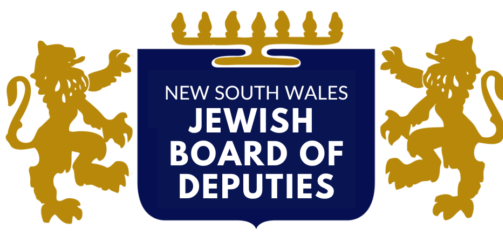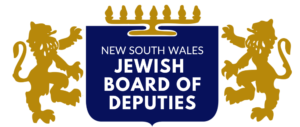The history of NSW Jewry has fascinating components. Although a small community, it has emerged as one of the most vibrant Jewish communities in the world.
The position of Jews in Australian society has been different to that of Jews elsewhere. As historian W D Rubinstein has written, one of the most outstanding features has been the normalcy of Jewish life in Australia. This normalcy can be traced as far back as 1788. It has been noted that there were at least eight, and perhaps as many as 14, Jewish petty criminals among the convict cargo on the First Fleet. Thus, Jews were among the first whites to arrive in NSW and so have never been considered to be “aliens” to the same extent as elsewhere. Most NSW Jews prior to the end of the 19th century were either English-speaking convicts or migrants from Britain or their Australian-born descendants. This added to the normalcy of their situation for, apart from religion, they were indistinguishable from the general population. Overall, the experience of Jews in NSW and across Australia has been inextricably bound up with that of all other whites.
Of the Jewish convicts who arrived with the First Fleet, some, like Esther Abrahams, were to make important contributions to the colony. While a significant number of Jewish convicts arrived after 1788, organised Jewish life did not start until 1817 with the formation of a Jewish Burial Society in Sydney.
It took until 1821 for the first Jewish free settlers to arrive. By 1828 there were 100 Jews in the colony. Numbers continued to grow and the first synagogue was formally established in 1837. By 1841 there were 1083 free Jewish settlers in the country. The 1841 census shows that New South Wales Jewry accounted for 65.3 % of the Australian Jewish population and 0.57% of the total population.
After 1828 free English Jewish settlers began to arrive and the first regular services were held in the home of P.J. Cohen. After renting premises, the congregation moved to the first purpose-built synagogue in York Street, Sydney, in 1844. Most of the early settlers were Anglo-Jewish, middle class immigrants who transposed the English pattern of Jewish practice to Australia. In 1878 the Great Synagogue, Sydney, was consecrated with Rev. A.B. Davis as its first minister. Its imposing structure remains an historic feature of the Sydney landscape, the building being substantially restored for the bicentennial in 1988.
During the 19th century a high proportion of Jews in NSW lived in country areas, with communities in Goulburn, Maitland and Grafton, and later in Newcastle and Broken Hill. These communities were too isolated and today the only reminder of their existence is the Jewish gravestones in country cemeteries and disused synagogues, apart from the Newcastle Synagogue which continues to function. In this period Jews participated in every facet of civic, economic and social life of NSW and prominent figures included Sir Saul Samuels, Sir Julian Salamons and later, Sir Daniel Levy and Justice Henry Emanuel Cohen. In 1917 the Legislative Assembly had to close on Yom Kippur because both the Speaker and Deputy Speaker were Jewish. Sydney Jewry contributed to the war effort during both the First and Second World Wars and NAJEX, the Jewish Ex-Servicemen’s organisation, was formed to support those involved in fighting for their country.
While the Sydney Jewish community was enriched by small numbers of Jewish refugees fleeing the Russian pogroms at the turn of the century, and by Polish Jews arriving in the 1920s, these ‘foreign Jews’ did not have a significant impact on the community.
It was the Jewish refugees who arrived largely from Central Europe in 1938-1939, escaping from Nazism, who laid the basis for the dramatic changes and evolution of Sydney Jewry. These changes included the formation of the NSW Jewish Board of Deputies in 1945, the Australian Jewish Welfare Society (now JewishCare), the Temple Emanuel (now the Emanuel Synagogue) and Moriah College. With the further influx of Holocaust survivors after the war, the community grew, with a large number of suburban synagogues being established.
The Gold Rush of the 1850s attracted a sizable number of Jewish immigrants. Census figures show that between 1851 and 1861 the Jewish community almost tripled to 5486. Many prominent Australian families trace their ancestry to these times. By 1901 the Jewish population exceeded 15,000, the majority from Britain.
Organised Jewish communities began to flourish in provincial towns, as well as in Sydney and Melbourne. The first congregation in Sydney took up home in the first purpose-built synagogue, located on York Street, in 1844. In 1878 The Great Synagogue was consecrated, and its imposing structure remains a historic feature of the city skyline, the building being restored for the Bicentenary in 1988.
The waves of immigrants from Hungary in the mid-1950s, South Africa, Russia and Israel in the 1970s and 1980s have enriched the community which today includes about 30 Orthodox synagogues, four Progressive synagogues and five Jewish day schools (Masada College, Moriah College, Mount Sinai College, Emanuel School and Kesser Torah College). The schools cater for about 50 per cent of Jewish children in Sydney. The many organisations in the community include the Board of Jewish Education, the Montefiore Home, the Jewish Communal Appeal (JCA), United Israel Appeal (UIA), Jewish National Fund (JNF), Women’s International Zionist Organisation (WIZO), the Zionist Council of NSW and the National Council of Jewish Women – the first women’s organisation formed in NSW.
The opening in 1992 of the Sydney Jewish Museum, dedicated to the Holocaust and Australian Jewish history and located in the former Maccabean Hall, was a landmark event.
The Jewish community in Sydney currently numbers about 50,000 people out of an Australian Jewish population of 120,000. Jews can be found in all parts of the Greater Sydney area, although approximately two-thirds reside in the eastern suburbs with most of the remainder on the north side of the Sydney Harbour Bridge.
Jews have lived in the free and open society of NSW for the duration of European settlement. Antisemitism is still in evidence. Individual Jews and the community as a whole have contributed significantly to Australian society, with leaders such as George Judah Cohen, Sydney D Einfeld, Professor Julius Stone and Professor Peter Baume.
The NSW Jewish Board of Deputies spearheaded a three-year campaign at the helm of an alliance of over 30 ethnic and faith communities, calling on the NSW Government to outlaw incitement to violence on the basis of race, religion, gender, sexuality and various other categories. The bill became law in June 2018.
Further Reading:
Edge of the Diaspora
by Suzanne Rutland
Brandl & Schlesinger, 1997
With One Voice (A History of the Board from 1945 to 1995)
by Suzanne Rutland & Sophie Caplan
Australian Jewish Historical Society, 1998
Pages of History
by Suzanne Rutland
Australian Jewish Press Pty Ltd, 1995
Australian Genesis
by G. F. J. Bergman & J. S. Levi
Rigby, 1974
(New Edition forthcoming from
Melbourne University Press in July 2001)





